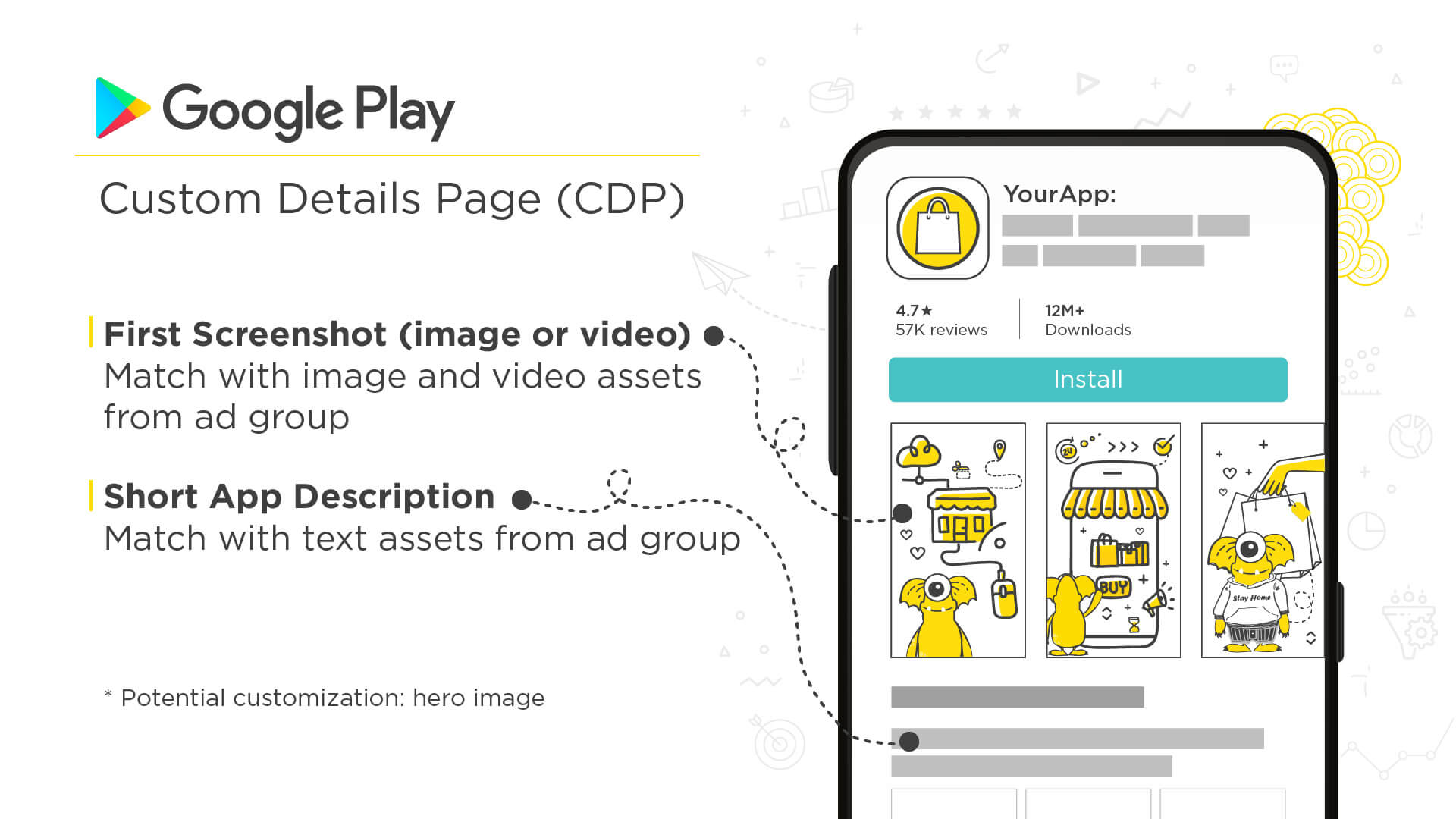Google Play’s Custom Details Page (CDP) Brings Paid & Organic Closer Together
We’ve always said a strong ASO strategy should be synchronized with a well-thought-out UA plan. Meaning, the ads should be consistent with the messaging presented in the app’s store listings and vice versa (learn more on the link between organic and paid app marketing).
Since users clicking on ads will arrive at the app’s page in the app stores, seeing a similar message to that which got them there should increase the chances they’ll end up installing the app.
Now, word got out that Google is planning to take an active step in this direction, allowing developers who run ads to match their app’s first impression with the campaign’s assets and messaging.
Custom Details Page – How will it work?
The Custom Details Page will match the first impression with the assets seen in the ad.
- First Screenshot (Image or Video) – will match with image and video assets from the ad group.
- Short Description – will match with text assets from the ad group.
When using Google Play’s A/B testing tool (Google Experiments), yellowHEAD’s ASO team tests to find what the majority of users prefer to see.
For example:
- Gaming apps – casual or competitive messaging, specific character, or features.
- Ecommerce – comfortable prices, product variety, or specific products.
According to the test results, we’ll apply the winning variant and continue to optimize the app’s store page in that direction.
With Keyword Optimization, our team makes sure the search terms we use in the text assets are in line with the graphic assets. This is to help create synergy between what users are searching for and what they’ll see within the search results and store listing.
Doing this can help lead to an increase in organic activity. As mentioned above, creating this synergy between the store listing and paid campaigns is also strongly recommended.
This is what Google will be offering with Custom Details Pages (CDP).
When running an ad campaign, the messaging is usually tailored to the user’s preferences. Usually, the reason a user clicks on an ad is that they see something that appeals to them on a personal level. So seeing the same messaging in the app page will reinforce the feeling that this app is what the user is looking for, and increase the chances they will install it.
As it seems by the technical requirements (see below), this feature will be available across geos and languages.
How will CDP benefit advertisers?
CDP is creating an optimized app page for non-organic users. Its advantages should be lowering CPI, increasing CVR, and, ideally, improving ROI when targeting paying users.
To utilize this feature, developers will need to provide Google with:
- Ad Group ID
- Campaign Target Geo
- Campaign Language (whitelisting English only)
- App Category
- Video CDP Asset (YouTube URL) – landscape or vertical
- Image CDP asset (Driver URL of uploaded image – access open to all) – 1800×3200, 16600×900, 3200×1800. Max Size 5Mb
- Play Store Short App Description (Word limit: 80)
As it seems, Google Play will choose an image/video and text from the ad group of the ad that was clicked (or the exact graphic and text). Those assets will be presented to the specific user as the first screenshot/video and short description, instead of the current app page assets.
How will CDP affect ASO work?
If performed on a large scale, CDP insights should be A/B tested in the Play Console for the organic user audience.
Otherwise, ASO efforts and strategies should be continued as usual, since this change does not affect organic audiences.
Until CDP is applied, and generally, we recommend maintaining a holistic approach across all your digital marketing efforts and keep A/B testing with all the available tools.


